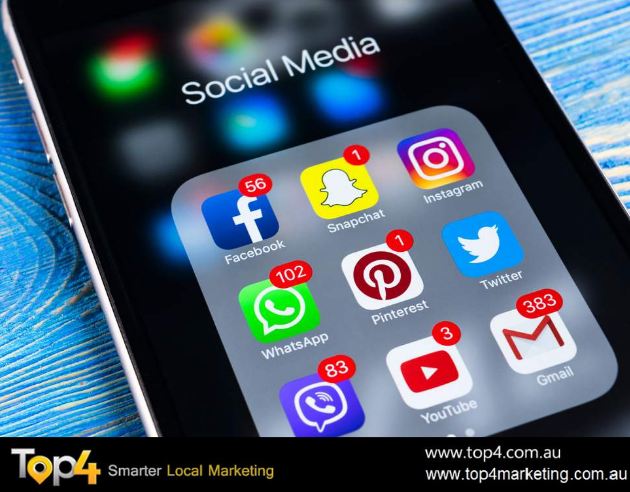A social media report is the best proof of performance your agency can give to its social media clients.
Makes sense, right? You provide a service and back it up with proof that the service is effective.
Your clients know having a social media presence isn’t just a good idea: it’s required in today’s digitally dependent world. Apart from a business website, social media profiles are one of the best ways customers can find out more information about a business. What’s more, social media helps to build an engaged community around the brand.
5 Rules of Creating a Good Social Media Report
Set Social Media Goals
A social media report is all about showing progress toward social media goals. Like anything, it is important to develop goals to understand what actions you will take. Without social media goals, a social media report doesn’t mean anything.
If you’ve ever read a book about goals, you can think back to the acronym S.M.A.R.T. The acronym spells out a variation of the following suggestions for developing goals that can be realized:
Specific goals make for purposeful activity
Your clients like to see goals because it proves you have an idea of what you’re doing. On top of that, you have direction.
The social media report you create for your client will revolve around those goals. You will be able to show them exactly what you achieved and the impact of that success.
By this point, you might be thinking: “Great, but we’ve already done things on social media without having identified goals like these. We just want to show the client we provided them a social media service. What do we do?”.
If this is you, it’s important to look back at social media activity and decide what the purpose of each post was.
Goals are a vital piece to the social media report. They are what give structure and meaning to what feels like endless metrics.
There is no shortage of goals your agency could choose from in the social media world. Whether it’s attracting a certain amount of leads or increasing website traffic. You’ll have to figure out what is most important to the success of your clients.
Determine Which Metrics Prove Progress to the Goal
Let’s Talk Social Media Metrics
One of the great things about social media is data. Clicks, views, follows, and much, much more is tracked and presented to social media managers to measure whatever they want.
That being said, it doesn’t necessarily mean the data provided is easily interpreted.
Right now, you may be looking at your tracking dashboards or post insights as if they were modern hieroglyphics. They must mean something right?
Some of them do. Others are what the social media world calls vanity metrics. Vanity metrics are numbers such as likes and follows. These metrics can also be categorized as reach and engagement. They make you feel more popular and help to validate the content you posted.
Vanity metrics are a great ego boost. Though these vanity metrics will give you a nice hit of dopamine, they do not show that you helped land your client a new customer.
When creating a social media report for your client, it is important to show that social media activity is contributing to the established goals.
Another type of metric revolves around conversion. Conversion metrics reflect the social media audience’s activity towards becoming a customer. This could be purchasing something on the website or signing up for a free account.
Conversion metrics are arguably the most important metrics to include in a social media report
For starters, it proves the time spent creating content is worthwhile. As sales have a revenue quota to meet, marketing has a lead generation quota. It aligns sales and marketing by showing the impact marketing has on lead generation for sales. It is also a great way to generate effective future content.
We’ve only scratched the surface of social media metrics. There are plenty to choose from, dependant on the specific goals of your client. Luckily, we have a great guide to Social Media KPIs to help you choose what is most valuable for your organization.
Provide Data Showing Success and Room for Improvement
Instant Social Media Success!.. Or Not?
Rome wasn’t built in a day, and social media success won’t be either.
The goals you decide on have to be achievable and realistic. Say your goal is to increase your following to create a stronger brand community. If you currently have 12 followers, the likelihood of gaining 10,000 followers in a short period of time is slim.
In the social media report, you’ll want to show your client the progress you’ve made on the goals that were agreed upon. If it looks like realizing the goal is miles and miles away, your agency will not look like they are making any steps towards achieving them.
That is not to say the goal should be easy. If the goal is just that easy, why would a client stick around?
In the social media report, you’ll want a number of different metrics showing both the areas of success and areas for improvement.
People want to know what they are getting and will trust your agency if you show them things they would never have thought to look at. The social media report should be another display of your expertise. It’s an opportunity to give your client a 360-degree view of what your efforts are accomplishing, as well as where more work needs to be done.
Create a Timeline
Your clients want results. You have created realistic objectives that are measurable, and are determined to include data showing the impressive strides and opportunities for growth.
But what your clients want even more is a clear idea of when the work will be done and how they will know it is making a difference.
Creating a timeline to show when your agency will be driving results can strengthen the trust you are working so hard to build with your client. Include the timeline in the social media report to give the client an idea for when the ‘work in progress’ and ‘opportunities for further growth’ will be realized.
Communicate Information Clearly
Communication is Key
Now that you have an idea of what content will be included in the report, you have to communicate the data in a digestible way.
Your client should not feel like they have to go through a maze of acronyms to figure out what you’re saying.
The audience is key. The social media report you are creating for your client is for your client. If the client looks at the social media report, they should be able to take away valuable information within the first couple of seconds.
Exciting news! If you’re in charge of social media, there is a good chance you are a creative marketer with exceptional communication skills.
Think about the social media report the same way you would social media content. Something that stands out, has clear messaging and keeps the reader interested.
Another rule inside of the communication rule is to avoid using jargon. Not everyone has a glossary on hand for decoding what you mean by CTR, PPC, SOS, IDK, etc… Even you, the expert, probably got lost with SOS (save our souls) and IDK (I don’t know) because you didn’t have the right context.
If you’re planning on using acronyms (please don’t), be sure there is a legend somewhere for people less in tune with the newest social media lingo to be able to understand.
Use graphs, completion bars, and highlight success screenshots within the report. Compare graphs from before your agency started working on the client’s social media and after.
After you’re done creating the report, try showing it to a friend or family member with limited knowledge about social media. Ask them a few comprehension questions regarding key takeaways and see if you’re getting the answers you were looking for.
Need some social media report inspiration? We’ve put together a great social media report template to input custom goals, numbers and any other data you want to communicate in a sleek, printable document.
The Social Media Report
Gone are the days where your clients don’t understand the value of your social media service.
With the social media report, your SMB client will understand the return on their investment. They will be as excited as you are about progress and will feel more in control of their digital image.
By following the 5 Rules to Creating a Good Social Media Report, your agency will build SMB trust, prove expertise, and increases client retention.
Looking to build customer loyalty through social media? Don’t forget to add your business to Top4 Marketing
List your business, create your own digital store to sell goods and services, and share posts on social media. Promote your business on Google instantly! Should you need help with local digital marketing then view our new Google Marketing Platform and services Top4 Marketing
Get Found On Google Promote Your Website, Reach local customers today!
Our Digital Marketing Agency Services Across All Industries Include Search Engine Optimisation (SEO), Google Marketing, Website Design, Corporate Web Development, and local location-based marketing using our own Google Marketing Platform!
Engage A Social Media Agency For Only 1/3 The Cost Of Employing A Social Media Manager…LET’S TALK!
Source: Vendasta


